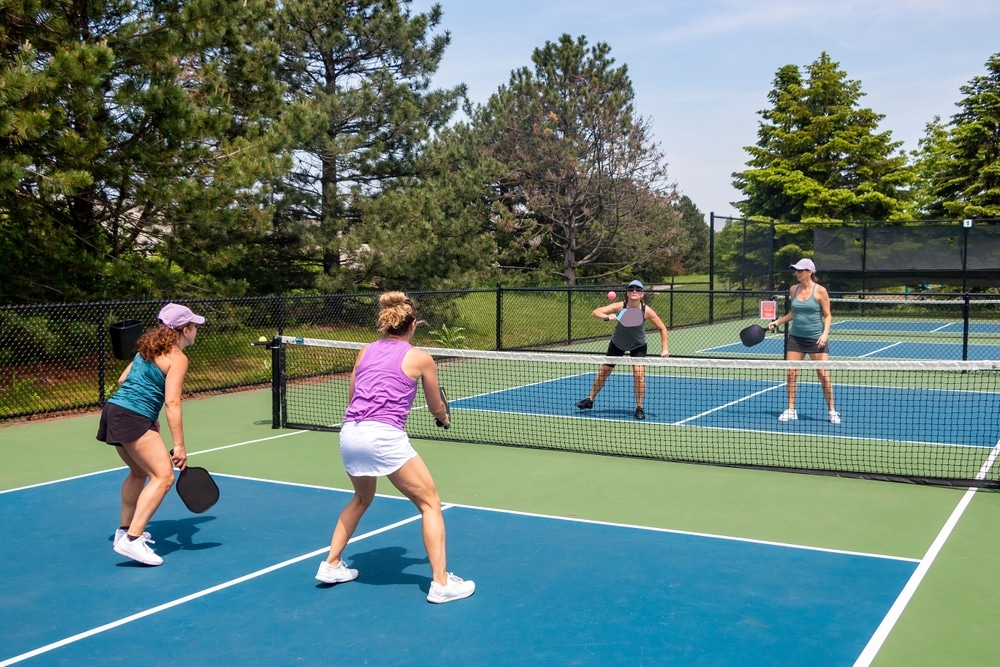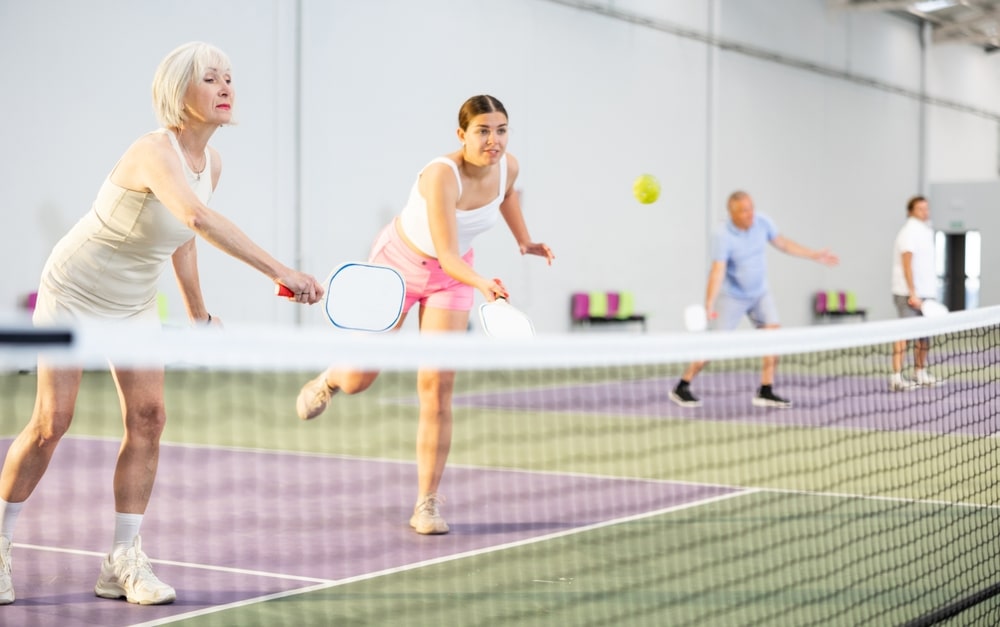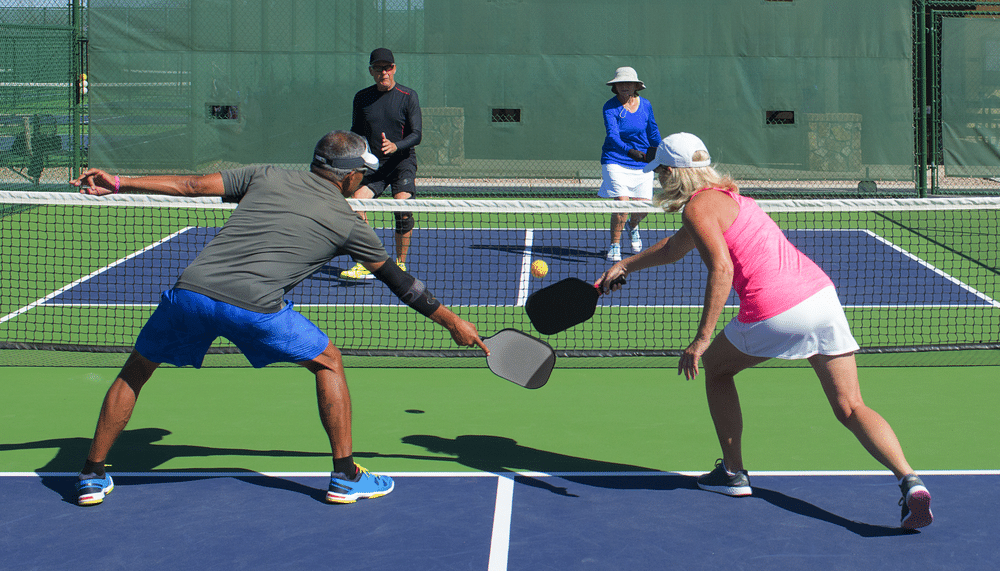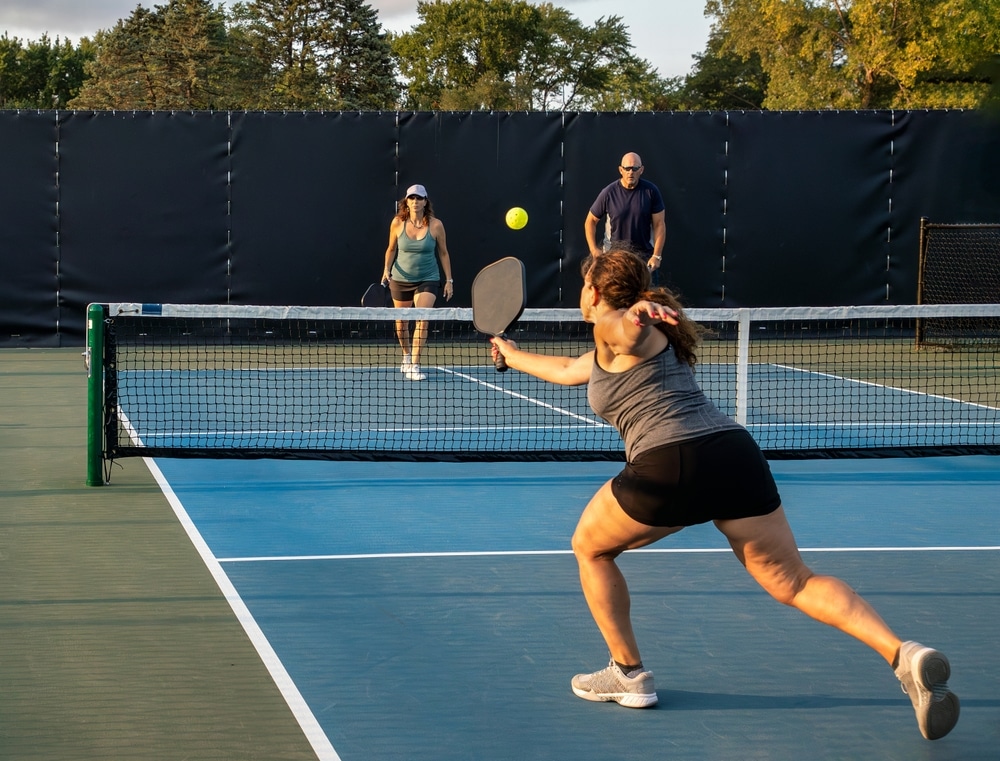Table of Contents
Ever wondered how top pickleball players seem to move effortlessly, always in the perfect position for the next shot? The secret lies in stacking—a strategic doubles technique that can give you a serious competitive edge. Whether you’re looking to optimize court positioning, maximize your team’s strengths, or simply outmaneuver your opponents, mastering pickleball stacking is a game-changer. But don’t worry—this strategy isn’t just for pros. With the right approach, you’ll learn how to stack like a champion and start controlling the game like never before. Ready to take your doubles play to the next level? Let’s dive in!

Pickleball Stacking
This blog will break down stacking in doubles pickleball, explaining its fundamentals and why it’s a game-changer. We’ll explore player roles, positioning, and how to maximize strengths while minimizing weaknesses. Additionally, we’ll clarify the rules of stacking to ensure players use it legally. By the end, you’ll have the knowledge to integrate stacking into your strategy, elevating your game and enjoyment of pickleball.
Stacking in Pickleball
Now, you must be wondering what is stacking in pickleball. Pickleball stacking allows partners to strategically line up on the same side of the court before serving or returning, completely changing the arrangement of the conventional double. Players may better cover each other’s deficiencies and build on their strengths, thanks to this tactical modification. Stacking improves mobility and adaptability, enabling doubles teams to control the game’s pace by beginning on the same side and moving into desired positions once the ball is in play.
Stacking is a successful technique because it emphasizes synchronization and control. Effective communication between players and their partners ensures smooth positional changes and prevents confusion while playing. Doubles teams can maximize their chances of victory on the pickleball court by maintaining a unified offensive and defensive plan through strategic stacking.

How to do Pickleball Stacking: A Guide
Stacking is a tactical move used by doubles pickleball teams to maximize their court positioning, especially on serves and return of serve. Gaining a competitive edge in stacking requires an awareness of the dynamics, regardless of whether you are stacking as the returning or the serving team. This is a thorough tutorial on pickleball stacking techniques.
Recognizing Traditional Positioning for Pickleball Stacking
Traditionally, once a point is scored, the serving team switches sides, with one player beginning on the ad side and one on the deuce side.
Throughout the game, the players from the returning team remain on their respective ad and deuce sides.
Stacking on Serve
In this strategy, one serving player moves to the open side following the serve, while the other begins on the same side (ad or deuce).
This guarantees strategic placement, particularly for the initial server, who always seeks to be on the ad side following the serve.
Returning a Serve
Returning players begin stacking on the same side on return, with the returning player at the baseline and the non-returning player close to the kitchen line.
After hitting the return, the returning player crosses over to the other side, and the non-returning player assumes the volley position.
The score must be carefully considered before stacking on return. The player who initiated the game must return from the deuce side if the score is tied.
The player who initiated the game must return from the advertisement side if the score is odd.

Important Stacking Strategy Components
Score Awareness
Look for odd scores and know which side the returning player will have started the game.
Preferred Side
Determine each player’s preferred side in light of their versatility and skills.
Communication
Use hand signals or spoken cues to ensure smooth stacking operations.
Switching Sides
Use calculated switches to stay in the best possible position for the game’s duration.
Volley Zone Line
Be mindful of the volley zone line to guarantee that returning and serving players are positioned correctly.
Using Left Hand
Players might have to hit the return with their non-dominant hand when stacked on the other side.
Hence, developing your pickleball stacking skills requires a blend of communication, flexibility, and tactical awareness. By using stacking methods well, doubles teams can improve their performance on the court and obtain a tactical edge over their opponents.
Final Thoughts
Stacking adds a new layer of strategy to pickleball, reshaping the game with intentional positioning. But what exactly is pickleball stacking, and how does it work? Simply put, it’s a technique where players shift their court positions to maximize strengths and exploit weaknesses. This tactic influences everything from serve returns to game pace, making it a powerful tool in doubles play. From positioning preferences to hand signals, stacking enhances team coordination and control. To truly elevate your game, understanding its rules and nuances is essential. Whether switching sides or optimizing court placement, mastering stacking can be the key to victory. A pickleball stacking diagram can also help you visualize and perfect this game-changing strategy.




